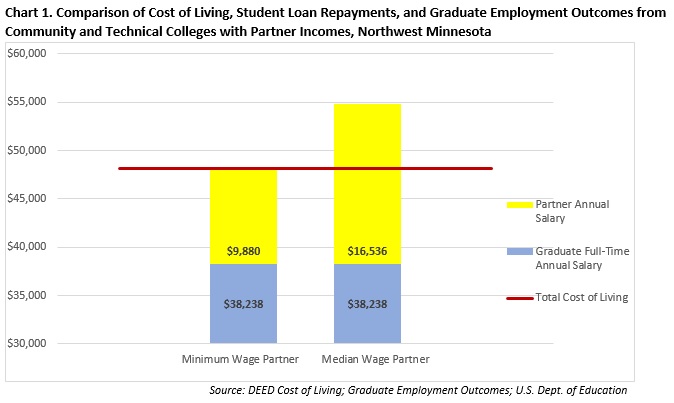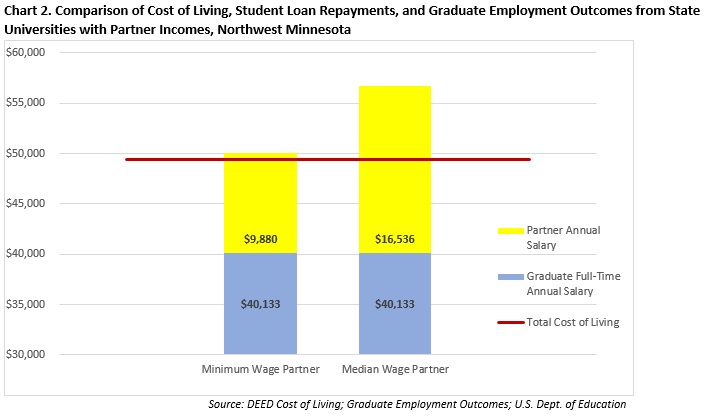 The presence of such industry powerhouses as Polaris, Arctic Cat and New Flyer make Northwest Minnesota a hub of transportation equipment manufacturing.
The presence of such industry powerhouses as Polaris, Arctic Cat and New Flyer make Northwest Minnesota a hub of transportation equipment manufacturing.
From wheat and potatoes to soybeans and sugar beets, the region is a major producer and processor of food staples and specialty agricultural products.
Want the freshest data delivered by email? Subscribe to our regional newsletters.
8/15/2016 11:37:32 AM
Chet Bodin
This month's blog post follows a series started in May which aims to inform those considering post-secondary education on the accumulated costs of education, and how well graduates are faring in the workforce. By comparing estimated costs of education with graduate employment and wage outcomes, hopefully current and prospective students will be in a better position to make financially sound decisions when choosing a post-secondary program. Please check out parts 1, 2 and 3 on the Northwest Minnesota Local Look Blog.
Last month's post compared the median wages of graduates from the public colleges and universities in Northwest Minnesota with median student loan debt and the regional cost of living for a single person. Data from DEED's Graduate Employment Outcomes tool show that the ability of regional graduates to afford basic cost of living expenses vary by the amount borrowed to complete a degree and post-graduate employment outcomes.
While these results focused on single persons, many workers paying off student loans have families and incur additional financial obligations. In such situations, a household may have more income if the partner is also working, but some cost of living expenses would also increase such as child care and transportation.
According to DEED's Cost of Living tool, the typical family in Minnesota consists of two adults and one child, with one full-time worker and one part-time worker. It costs a family of three with one child approximately $46,416 a year in Northwest Minnesota to meet basic cost of living needs, including housing, transportation, insurance, food, child care, taxes and other expenses (Table 1).

This is more than the median salaries of graduates from Minnesota State Colleges and Universities institutions in Northwest Minnesota after two years in the workforce, which hovered around $40,000 per year for 2013 graduates who were working full-time, year-round. When average student loan repayment costs are added, it may be difficult for recent graduates to afford their student loan obligations and basic cost of living necessities without support from a partner (Table 2).

Table 2 indicates that the average graduate working full-time within two years would have to rely on their partner's income to help meet Cost of Living standards while paying off their student loans, regardless of the degree earned. As noted above, the typical family includes one full-time and one part-time worker, working a total of 60 hours per week.
Using this threshold to estimate combined household income, Charts 1 and 2 show how different employment scenarios would affect an average family's financial standing. Though it's important to note that not all graduates find full-time employment right away, it is a realistic and attainable goal for those who acquire post-secondary education. Assuming that the recent graduate is working 40 hours per week, household income would include an additional 20 hours per week of wages earned by the household partner, which will affect how well borrowers can pay off student loans. Twenty hours per week amounts to 1,040 hours per year, which allows for quick estimates of annual wages for a partner at different wage levels. For example, a worker earning $9.50 per hour would have an annual income of $9,880 ($9.50 per hour x 1,040 hours = $9,880); while a worker earning the regional median wage of $15.90 would have an annual salary of $16,536 ($15.90 per hour x 1,040 hours = $16,536). With that in mind, Charts 1 and 2 below include partner wages at both the state minimum wage and the regional median wage in Northwest Minnesota. While real world scenarios vary from these examples, the data provides a framework for families to estimate their financial circumstances and outlook (Chart 1 and Chart 2).


The data shows that a graduate from a Minnesota State Colleges and Universities Community and Technical College in Northwest Minnesota finding full-time, year-round work (again, a large assumption) with a partner working part-time should be able to cover both basic cost of living expenses and education loan payments (shown as the "Total Cost of Living") most of the time. Even if their partner earned no more than minimum wage, their household income would be virtually the same as what it costs to live and pay back their loans. Higher wages for the partner would create some financial breathing room, as shown in the example of a partner earning the regional median wage of $15.90.
Households with graduates of state universities in Northwest Minnesota would be in a similar position. Their average annual education loan repayment costs are higher, but so are their median full-time salaries two years after graduating. Those with a partner working part-time making minimum wage would be able to clear total cost of living by more than $500 a year. As before, this amount increases with the partner's wage. If the partner earned the regional median wage, the household should clear total cost of living expenses by more than $5,000 – maybe even enough to start saving for the future education costs of their child. Provided, of course, that the other adult member of the household does not have student loan payments of their own.
Next month's post will look at how graduates from Healthcare and Social Assistance, the largest employment sector in Northwest Minnesota, are faring in the workforce and earning a living.
Contact Chet Bodin.